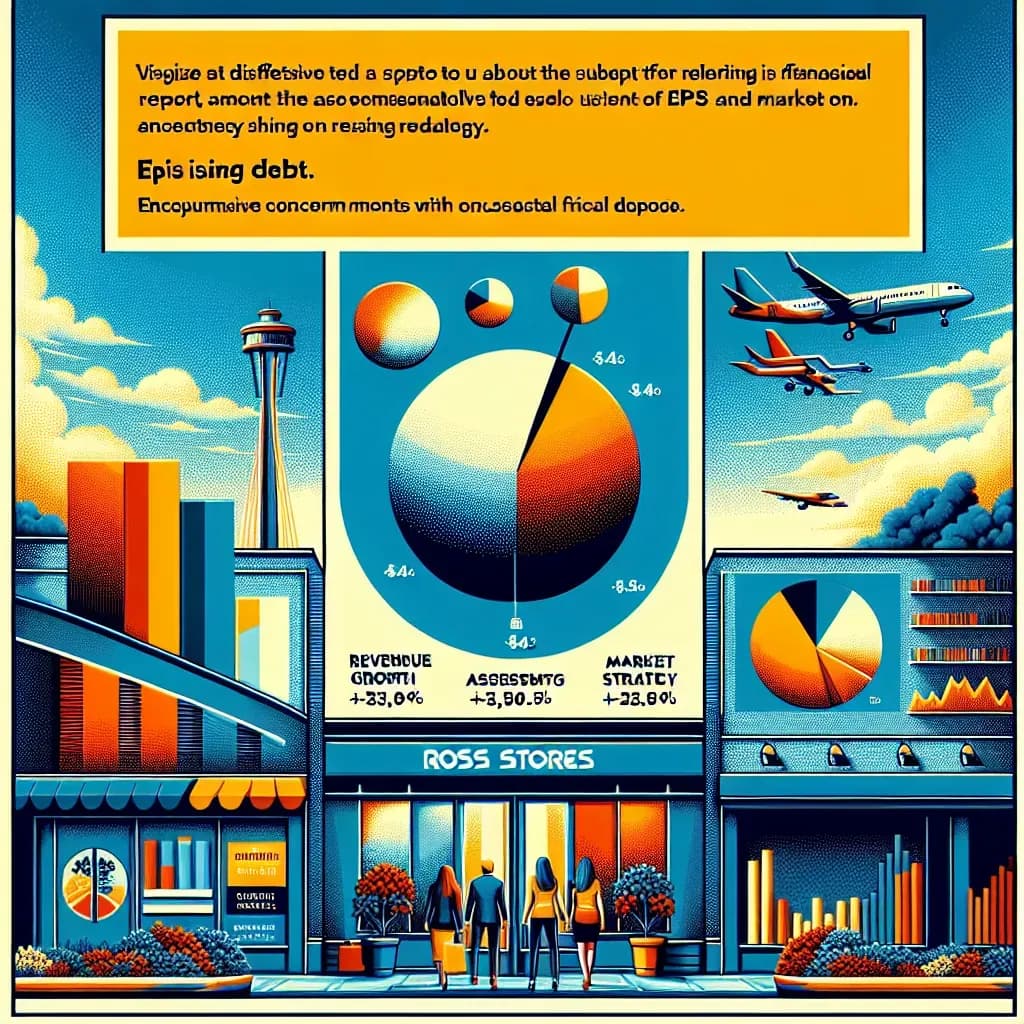Ross Stores Q2 2025 Report: Revenue Growth Amid Debt Concerns

Ross Stores, Inc. (NASDAQ: ROST) Q2 2025 Financial Report Analysis
Key Insights Snapshot
- Stock Performance: Current stock price demonstrates resilience in a fluctuating retail environment.
- Revenue Growth: Q2 revenue increased to $5.53 billion, up from $5.29 billion in Q2 2024.
- Earnings Per Share (EPS): Basic EPS of $1.60 and diluted EPS of $1.59.
- Total Long-term Debt: Increased to $1.52 billion as of August 2, 2025, indicating a need for careful debt management.
- Cash Reserves: Decreased to $3.85 billion, raising some liquidity concerns.
- Recommendation: Hold. While growth in revenue and profitability is notable, increasing debt and declining cash reserves warrant caution.
Detailed Financial Analysis
Ross Stores, Inc. has filed its quarterly report (10-Q) for the period ending August 2, 2025. This report highlights key financial metrics and trends that are essential for investors assessing the company’s performance in the current retail climate.
Revenue Performance
For the three-month period ending August 2, 2025, Ross Stores reported revenues of $5.53 billion, representing a 4.6% increase from $5.29 billion in Q2 2024. The six-month revenue also reflects growth, totaling $10.51 billion compared to $10.15 billion in the prior year. This growth can be attributed to a strong sales performance across various merchandise categories, with Home Accents and Ladies apparel leading the charge, each contributing 23% to total revenue.
Profitability Metrics
- Operating Income: For Q2 2025, operating income was reported at $638 million, slightly down from $659 million in Q2 2024. This indicates a decline in operating efficiency, despite higher revenues.
- Earnings Before Taxes: Also saw a decrease to $670 million from $702 million year-over-year, aligning with the drop in operating income.
- EPS Growth: Basic and diluted EPS figures of $1.60 and $1.59, respectively, demonstrate solid profitability, although the growth in EPS has slowed compared to previous quarters.
Cash Flow and Liquidity
The company’s cash and cash equivalents decreased to $3.85 billion from $4.73 billion in the previous year. This decline raises concerns about liquidity, especially in a competitive retail environment where cash flow management is critical. Restricted cash increased slightly, indicating some funds are earmarked for specific obligations, yet the overall liquidity picture appears tighter.
Debt Management
Ross Stores’ total long-term debt rose to $1.52 billion, an increase from $1.46 billion in the previous quarter. The company carries various debt instruments, including senior notes with differing maturity dates and interest rates. With interest expenses amounting to $10.55 million for the latest quarter, the debt levels require monitoring, especially considering rising interest rates in the macroeconomic environment.
Stock Repurchase and Dividends
The company repurchased 3.9 million shares for $525 million during the first half of 2025, reflecting a commitment to return capital to shareholders. Additionally, a quarterly cash dividend of $0.405 per share was declared, indicating a stable return to shareholders.
Competitive Landscape and Market Conditions
The retail sector continues to face challenges, including inflationary pressures and supply chain disruptions. Competitors such as TJX Companies and Burlington Stores are also navigating similar challenges, making it crucial for Ross to maintain a competitive edge through effective inventory management and customer engagement strategies.
Tax Position
The effective tax rate for Q2 2025 was reported at 24%, showing slight improvement from 25% in Q2 2024. The company has reserves for unrecognized tax benefits totaling $66.5 million, reflecting ongoing engagements with tax authorities.
Conclusion and Investment Recommendation
Overall, Ross Stores, Inc. has showcased resilience through revenue growth and profitability in a challenging retail landscape. However, the increase in long-term debt, coupled with a decrease in cash reserves, raises flags about liquidity and financial flexibility moving forward. Investors should closely monitor the company’s debt management strategies and cash flow performance in upcoming quarters.
Recommendation: Hold. While the fundamentals remain strong, the company’s ability to manage its debt and liquidity will be crucial in sustaining its competitive position. Investors may want to reassess their positions based on upcoming quarterly performances and market conditions.




